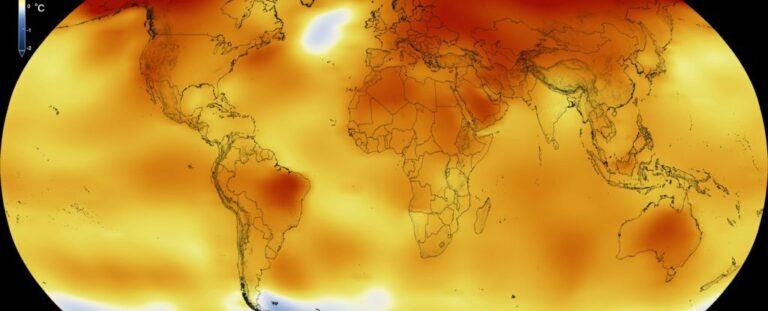
Jan 22, 2018
US scientists said that 2017 was among the hottest recorded on earth.
In their annual global temperature analysis, NASA scientists found 2017 to become that the second-warmest year because record-keeping started in 1880, next only to 2016. The National Oceanic and Atmospheric Administration, which also conducts global climate analysis, ranked it the third-warmest year, slightly less hot than 2016 and 2015.
The fact that 2017 came in so hot is particularly significant because, unlike 2016, 2017 was not an El Niño year. El Niños are atmospheric patterns across the Pacific sea that typically add significant heat to global average temperatures. In 2017, not one of the temperature anomaly may be attributed to that pure heat supply.
So an El Niño-free year on earth is now a record-breaking one.
“It really brings it home that the trends we are seeing are independent of anything that’s happening in terms of variability in the Pacific,” Gavin Schmidt, director of the Goddard Institute for Space Studies, the NASA laboratory that conducted the research, told reporters on Jan. 18.
March 2017 was particularly record-breaking, measuring 1.9 degrees Fahrenheit (1.03°C) above the 20th-century average. “This marked the first time that the monthly temperature departure from ordinary surpassed 1.8°F (1.0°C) in the absence of an El Niño episode in the tropical Pacific Ocean,” NOAA reported.
But why the difference in rank?
NASA found 2017 was 1.62°F (0.90°C) above the 1951 to 1980 average, while NOAA discovered it was 1.51°F (0.84°C) over the 20th-century average. Both agencies say that they stay in agreement with one another about the general tendency of climate change.
“The general picture is very, very clean and clear,” regardless of the small differences, Schmidt explained. “The long-term tendencies are very clear independent of who is doing these analyses.”
The extremely slight distinction is a result of different methods for analyzing international temperature and is a fantastic argument for having more than one set of national scientists studying climate change–a theory called scientific redundancy.
The case for scientific redundancy
Both NASA and NOAA separately study global climate change. The slight difference in their outcome is a fantastic argument for the importance of technological empowerment. US President Donald Trump has proposed removing NASA’s climate change program, arguing that the redundancy between agencies is wasteful. However, in fact, redundancy is a fundamental tenet of high-quality science. If more than 1 set of information (produced using different analysis methods) stage to the exact same trend or conclusion, scientists can have more assurance that the overall conclusion is correct.
In this case, the gap was extremely slight, and the agencies remain in agreement on the overall trajectory of global warming.
“Individual standing of years isn’t necessarily the most significant thing,” Schmidt told the New York Times. “What we’re seeing is an increasing number of decades of temperatures greater than one degree above the pre-industrial era. And we are not going to go back.”
Despite 2018 shaping around probably be a La Niña season– a phenomenon that is the opposite of El Niño, which typically cools global average temperatures–NASA predicts 2018 to rank as one of Earth’s hottest.
“We would be looking toward a similar year — almost definitely a top-5 year,” Schmidt says.
And none of this is a surprise, he explained. “We are warming at the rate we expected a decade ago.”










